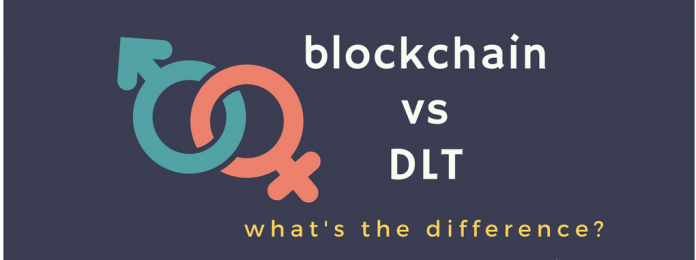It is often the case that the terms blockchain and distributed ledger technology (DLT) are used as synonyms. In reality, there are some differences.
Today, thanks to technological progress, there are new specific terminologies that with great impact break into the common vocabulary, sometimes creating a bit of confusion and misunderstanding.
That’s why it’s necessary to make some clarifications to understand the differences between blockchain and distributed ledger technology.
The difference between blockchain and DLT
DLT or Distributed Ledger Technology is a database distributed on different nodes or computer devices, which individually participate in the network by replicating and saving a copy of the ledger.
There is no central authority at the command, no arbitrator, and each node that proceeds to the registration and storage, works independently.
The principle on which the DLT is based is consensus through voting. At each update, each node performs a vote to ensure that the majority agrees with the conclusion reached, i.e. reaching consensus. A consensus is an algorithm that, once solved, automatically updates the database distributed on all nodes, which will receive a copy.
Blockchain is basically a special form of DLT. The blockchain, in fact, is the only form of DLT that employs a chain of blocks to reach consensus on the distributed ledger.
Even the blockchain, being managed by peer-to-peer networks, can exist without any central authority and uses a consensus algorithm to proceed with the update of the database.
But what makes the blockchain unique compared to other DLTs is the grouping and organization into blocks. It is the blocks that are connected to each other and protected by encryption.
Blocks are continuously added to the chain, only allowing data to be added to the distributed database, in fact, once recorded, the data can no longer be modified or deleted. Moreover, in the chain, the blocks are closed by a type of cryptographic signature called hash, which will be equal to the hash of the next block.
Obviously, the blockchain also owes its fame to the creation of the queen of cryptocurrency, bitcoin, since it is the technology underlying it.
There are consortia like R3, Hyperledger and Enterprise Ethereum Alliance that design and develop the full potential of DLT and blockchain.
Blockchain and DLT are both distributed decentralized ledgers that proceed by applying the consensus between the nodes in a transparent and not hackable way.
But blockchain is that special type of DLT that uses the chain of blocks to organize and record data and which can only be added.
Ergo: all blockchain are DLTs but not all DLTs are blockchains.




